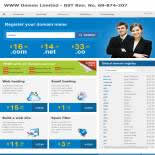
Today's retailers must create an experience, both in-store or online, to seize each moment to engage with customers and make a difference with them.
The goal for every brand today is to deepen and enrich relationships with their customers. Today, the price of that deeper engagement is the ability to know each individual in context and deliver personally relevant experiences in the moment. Though businesses can't control the fact that customers are now in control, businesses can affect how they treat the customer during his or her journey, or lifecycle, with a company by creating moments that matter.
Understanding the Customer Lifecycle
Instead of focusing on marketing activities like ads, channels, and conversions, starting with the customer in mind is more effective.
Define the metrics that characterize a good customer. Most companies would likely agree that customer engagement, purchase history, sentiment, and brand advocacy would be appropriate metrics for identifying a "good customer."
Once those attributes have been defined, the customer lifecycle can be created that drives those metrics.
The first step in creating customer lifecycles is to orient a business around a group of core concepts that build a data framework, which can then be measured. Understand that customers will engage with the business on his or her terms. When they do, their digital and physical interactions must drive the attribution process. The customer lifecycle provides a common framework for organizing those interactions to understand the behaviors across all customer journeys.
Defining and Measuring the Moments That Matter
One of the important benefits of creating customer lifecycles is that it provides ongoing visibility into and measurement of how revenue is generated. As the line between online and offline customers continues to blur, businesses must embrace visibility as a by-product of the attribution process.
Most businesses are in desperate search of the moments that drive engagement and advocacy in a customer's path to purchase. Unfortunately, organizational silos often make it difficult to see customers or their influencing moments—as the data across channels is almost always inaccessible and organized differently.
A best-practice in designing customer lifecycles is to identify and define the "moments that matter." Those moments are significant to both the customer and the business—the moments that drive customer engagement, make customers want to shout a brand's praises from the rooftops, or create the desire to purchase a product.
This practice suggests that for any business there are roughly 20 key moments that should be standardized, such as:
- A customer's time browsing for a product
- Social sharing
- Contact with a piece of email marketing, like a newsletter
- A rating of an event, product, or piece of content
- Watching a company marketing or promotional video
- Social promotion
- Customer's search efforts
- A scheduled event or appointment
- Product research done by the customer
- Adding something to a shopping cart
- Live help from a company associate
- Customer's purchase
- Customer writing a review of the product or service
Those moments can occur anywhere. Organizing customer lifecycles around a list like this provides a consistent framework for the business to use as it considers the customer's path to purchase in a way not hindered by channel silos.
Observing What Your Customers Are Doing
The last and critical step in implementing customer lifecycles is to observe the actual behavior of these customers across each and every channel. Central to this approach is a process that compiles events from all touch points into a common framework. The collection of these individual events makes up the journey for each customer. A collection of journeys from similar customers allows for the creation of personas based on common behavioral patterns that can be analyzed across a common customer lifecycle.
The customer lifecycle also enables a business to create metrics to help it understand how well the business is doing in meeting customers' needs in the aggregate. Understand that today's customers will engage with a business on their terms; and when they do, their digital and physical interactions must drive the attribution process.
By identifying and measuring the "moments that matter," businesses can realize increased revenue, attribute sources of revenue correctly, and to really serve the customer experience to the best of their ability—which is where the magic happens.









